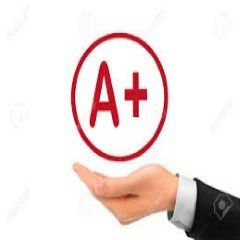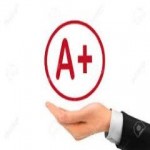Econ 100B Macroeconomic Analysis exam solution correct answers
Econ 100B Macroeconomic Analysis exam solution correct answers
1. Suppose the economy has a positive unemployment gap. Then:
2. Suppose the economy is initially in general equilibrium and is at its target inflation when it experiences a temporary negative supply shock. In response, the inflation-targeting central bank reacts to keep inflation at its original, pre-shock level. Then:
3. When property rights are well defined and inexpensive to enforce:
4. Prudential regulation:
5. If monetary policy is used for short-run stabilization purposes, then long-run economic growth will be slower the ________ is fiscal policy and thus the ________ is the real policy interest rate.
6. The actual government budget deficit ________ be used to determine the effectiveness of discretionary fiscal policy actions because ________.
7. With flexible exchange rates the fiscal policy multiplier becomes:
8. Suppose that U.S. monetary and fiscal policies remain unchanged while the European Union adopts an expansionary fiscal policy and a contractionary monetary policy. With ________ European real interest rates, the resulting ________ of the U.S. dollar will eventually ________ U.S. net exports.
9. An increase in the credibility of monetary policy is represented by a change in:
10. Consider two identical economies hit by the same temporary negative aggregate supply shock. In the economy with the more credible monetary policy, there will be:
B. Analytical Questions (70 points). Answer BOTH of the following questions based on the standard models of analysis developed in class. The information in the various parts of the questions is sequential and cumulative. Be sure to show and discuss each individual effect and not just the net effect of any exogenous shocks.
1. The AD/AS Model with Supply-Side Economic Effects (35 points). Suppose the economy is characterized by (1) sticky wages and prices and (2) substantial supply-side economic effects. The economy initially (i.e., in Year 0) has a cyclical budget deficit.
a. Based only on this information, use an AD/AS model diagram to clearly and accurately show the economy’s initial (1) economic output and (2) inflation. This diagram should be drawn in BLACK.
b. In Year 1, the government enacts (1) a significant permanent increase in marginal personal income tax rates and (2) a sharp permanent decline in government consumption purchases. In response, the central bank engages in a discretionary monetary policy easing of 2 percentage points, sufficient to offset the aggregate demand effects of the change in government purchases. Meanwhile, the financial markets increase the term premium by 2 percentage points. Incorporating only this new information, clearly and accurately show on your diagram above what, if anything, happens to (1) economic output and (2) inflation. These effects should be drawn in RED
c. Provide an economic explanation of what you have shown in your diagram above. Discuss what, if anything, happens to (1) economic output and (2) inflation. Be sure to explain why these changes take place and what causes them.
d. In Year 2, the increase in the term premium that occurred in Year 1 is completely reversed. Incorporating only this additional information, clearly and accurately show in your diagram above what, if anything, happens to (1) economic output and (2) inflation. These effects should be drawn in BLUE.
e. Provide an economic explanation of what you have shown in your diagram above. Discuss what, if anything, happens to (1) economic output and (2) inflation. Be sure to explain why these changes take place and what causes them.
2. The AD/AS Model with a Foreign Exchange Market (35 points). Suppose the economy, which is characterized by sticky wages and prices, perfect capital mobility, and a flexible exchange rate with a direct quote, is initially (i.e., Year 0) in general equilibrium.
a. Based only on this information use an AD/AS diagram (on the left) and a Foreign Exchange Market diagram (on the right) to clearly and accurately show the economy’s initial (1) economic output, (2) inflation, and (3) exchange rate. These diagrams should be drawn in BLACK.
b. In Year 1 the central bank engages in an open market purchase of government securities. Incorporating only this additional information, clearly and accurately show in your diagrams above what, if anything, happens to (1) economic output, (2) inflation, and (3) the exchange rate. These effects should be drawn in RED.
c. Provide an economic explanation of what you have shown in your diagrams above. Discuss what, if anything, happens to (1) economic output, (2) inflation, and (3) the exchange rate. Be sure to explain why these changes take place and what causes them.
d. Subsequent to the monetary policy change but still in Year 1, the government decides to peg the exchange rate at its initial (i.e., Year 0) level. Incorporating only this additional information, clearly and accurately show in your diagrams above what, if anything, happens to (1) economic output, (2) inflation, and (3) the exchange rate. These effects should be drawn in BLUE
e. Provide an economic explanation of what you have shown in your diagrams above. Discuss what, if anything, happens to (1) economic output, (2) inflation, and (3) the exchange rate. Be sure to explain why these changes take place and what causes them. Also, be sure to explain exactly what the central bank must do in order to peg the exchange rate.
Econ 100B Macroeconomic Analysis exam solution correct answers
Exam #3 (Spring 2015) 1/11 Name: ___________________________________ (Last name, first name) SID: ___________________________________ GSI: ___________________________________ Econ 100B: Macroeconomic Analysis Professor Steven Wood Spring 2015 Exam #3 ANSWERS Please sign the following oath: On my honor, the answers on this test are entirely my own work. I neither gave nor received any aid while taking this test. I will not discuss the questions on the test with any other person until after 6:00 p.m. on May 11, 2015. Signature: __________________________________ Any exam turned in without a signature will be assigned a grade of zero. Exam Instructions 1. When drawing diagrams, clearly and accurately label all axes, lines, curves, and equilibrium points. 2. Explanations should be written in pencil or black. Legibility is a virtue; practice good penmanship. 3. Explanations should be succinct and to the point; make use of bullet points and common mnemonics. 4. If you have a question, ask one of the GSIs. The GSIs have not seen the exam beforehand and can only provide general guidance. You are totally responsible for your answers regardless of what a GSI has said to you. 5. If you need to re-draw a diagram or need more room to write your answers, use pages 2 and/or 11 – 14. 6. If you finish your exam before 5:55 p.m. you may turn in your exam to a GSI and quietly exit the room. 7. If you finish your exam after 5:55 p.m. close your exam packet but remain seated until time is called. 8. When time is called, STOP writing, immediately CLOSE your exam packet, and TURN IN your exam. You WILL BE PENALIZED if you continue to write past the official end of the exam. Do NOT open this exam until instructed to do so. Exam #3 (Spring 2015) 2/11 A. Multiple Choice Questions (30 points). Highlight the BEST answer (3 points each.) 1. Suppose the economy has a positive unemployment gap. Then: a. A positive inflation gap results. b. A negative unemployment gap results. c. It is likely that the equilibrium real interest rate has risen above the real policy interest rate. d. It is likely that the equilibrium real interest rate has fallen below the real policy interest rate. e. None of the above. 2. Suppose the economy is initially in general equilibrium and is at its target inflation when it experiences a temporary negative supply shock. In response, the inflation-targeting central bank reacts to keep inflation at its original, pre-shock level. Then: a. In subsequent years, no further action will be required by the central bank. b. The resulting negative output gap will force the central bank to eventually completely reverse its original increase in the real policy interest rate in order to keep inflation at its target rate. c. The resulting negative output gap will force the central bank to eventually completely reverse its original decrease in the real policy interest rate in order to keep inflation at its target rate. d. All of the above. e. None of the above. 3. When property rights are well defined and inexpensive to enforce: a. Little or no collateral is needed to secure a loan. b. Collateral is an efficient solution to adverse selection problems. c. Commercial banks become increasing less dominant among financial intermediaries. d. Borrowers with few assets are at no disadvantage relative to borrowers with many assets. 4. Prudential regulation: a. Is necessary for government-directed credit. b. Is more likely for direct finance than for indirect finance. c. Encourages people to avoid banks that engage in excessively risky behaviors. d. Requires banking services to be provided to economically-disadvantaged households and businesses. 5. If monetary policy is used for short-run stabilization purposes, then long-run economic growth will be slower the ________ is fiscal policy and thus the ________ is the real policy interest rate. a. More expansionary, lower b. More expansionary, higher c. More contractionary, lower d. More contractionary, higher Exam #3 (Spring 2015) 3/11 6. The actual government budget deficit ________ be used to determine the effectiveness of discretionary fiscal policy actions because ________. a. can; it includes non-discretionary spending change. b. can; it excludes non-discretionary spending change. c. cannot; it includes non-discretionary spending changes d. cannot; it excludes non-discretionary spending changes 7. With flexible exchange rates the fiscal policy multiplier becomes: a. larger because of a decrease in net exports. b. larger because of an increase in net exports. c. smaller because of a decrease in net exports. d. smaller because of an increase in net exports. 8. Suppose that U.S. monetary and fiscal policies remain unchanged while the European Union adopts an expansionary fiscal policy and a contractionary monetary policy. With ________ European real interest rates, the resulting ________ of the U.S. dollar will eventually ________ U.S. net exports. a. lower, depreciation, increase b. lower, appreciation, decrease c. lower, deprecation, decrease d. higher, appreciation, increase e. higher, depreciation, increase f. higher, appreciation, decrease 9. An increase in the credibility of monetary policy is represented by a change in: a. The parameter λ on inflation in the monetary policy curve. b. The price shock term ρ in the short-run aggregate supply curve. c. The expected inflation term πe in the short-run aggregate supply curve. d. The parameters c and d on consumption and investment in the IS curve. e. The parameter γ on the output gap in the short-run aggregate supply curve. 10. Consider two identical economies hit by the same temporary negative aggregate supply shock. In the economy with the more credible monetary policy, there will be: a. A larger increase in inflation and a larger increase in unemployment. b. A larger increase in in...




Online Users
-
 Askwilliam
Today
Askwilliam
Today


A+ - Thank you!
Thanks for the positive feedback!